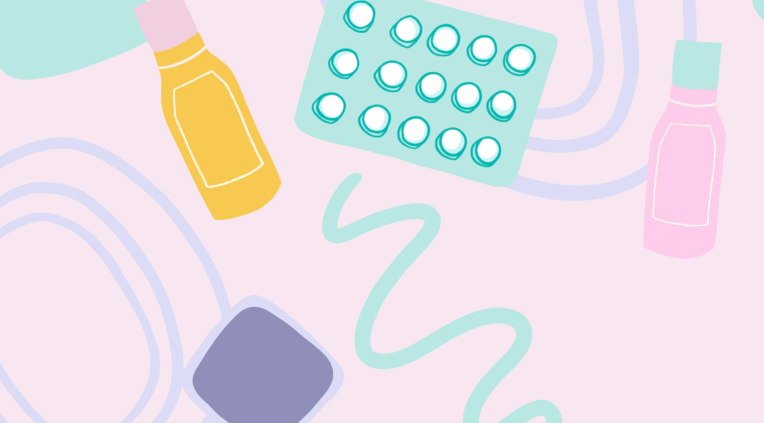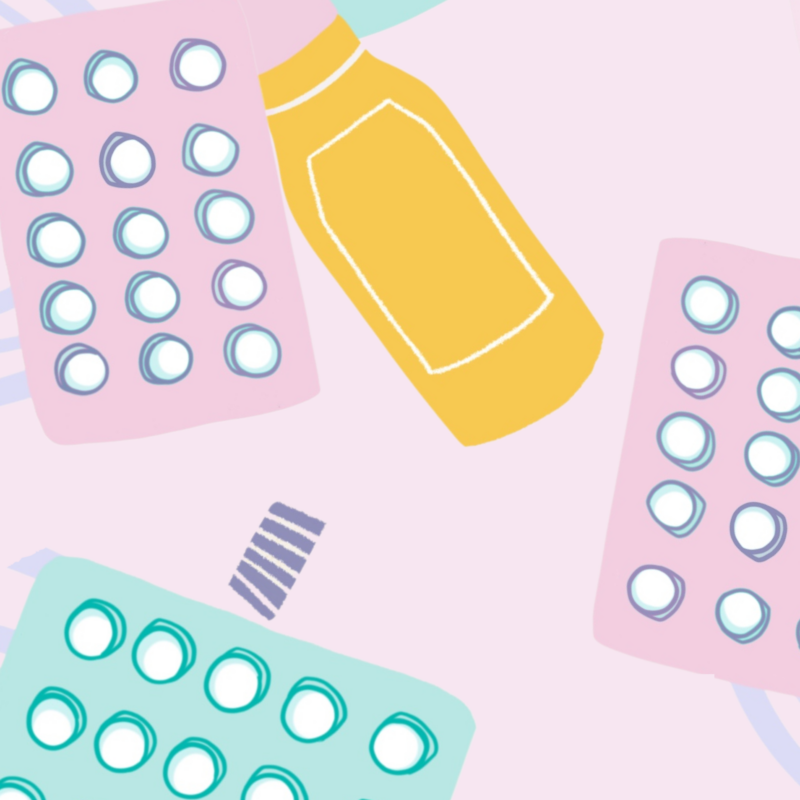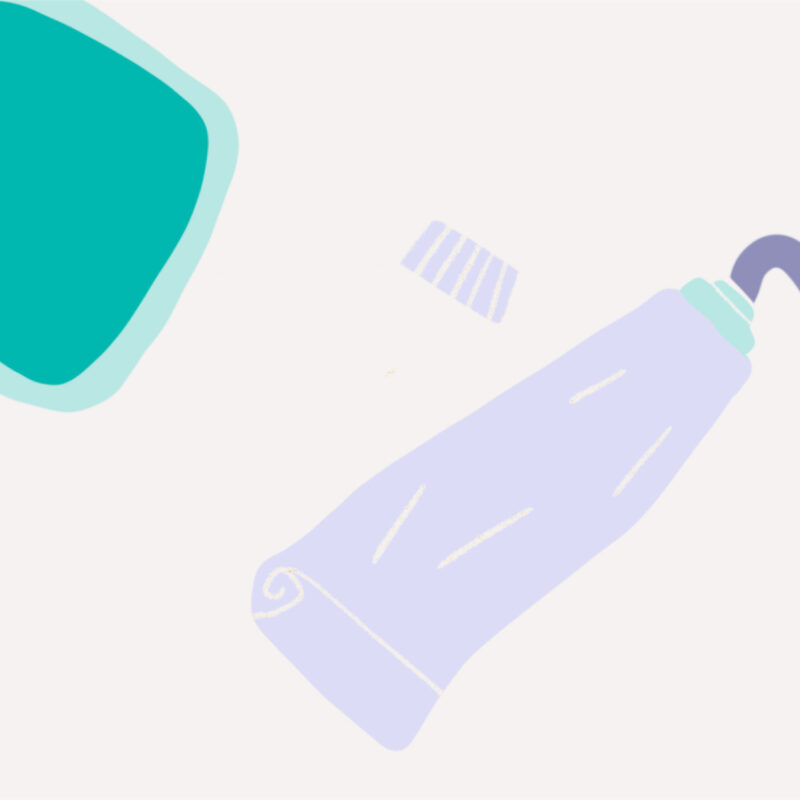HRT doses explained
What you need to know about hormone replacement during perimenopause and menopause
Hormone replacement therapy (HRT) is usually the first-line treatment to improve symptoms of perimenopause and menopause [1]. It works by topping up or replacing your missing hormones.
Types of HRT usually contain oestradiol (the beneficial type of oestrogen), progesterone and also testosterone.
But what are these hormones, why are there different doses and why do absorption rates vary from person to person? This article tackles these key questions and more.
What is oestradiol and what do I need it for?
Oestradiol is a hormone produced by your ovaries, adrenal glands, brain and other tissues. It helps to regulate your menstrual cycle and the development of female characteristics during pregnancy, such as breasts.
It also plays important roles in bone health, memory and cognition and cardiovascular health and is essential for many bodily functions, including:
- temperature regulation
- maintaining healthy and strong muscles and joints
- helping your nerves work correctly
- maintaining a healthy metabolism
- improving the way your immune cells work and function
- reducing inflammation throughout your body
- improving the way other neurotransmitters (such as serotonin and dopamine) work in your brain
- keeping the lining of your vagina and vulval tissues healthy and lubricated
Oestrogen is actually an umbrella term for three types: oestradiol, oestrone and oestriol. Oestradiol is the main type of oestrogen produced by your body in your reproductive years.
You have oestradiol receptors in cells throughout your entire body, so when levels fluctuate and fall, this can trigger wide-ranging and varying symptoms, including low mood, anxiety, memory problems, poor sleep, joint aches and pains, brain fog, hot flushes and vaginal dryness.
How is oestrogen given in HRT?
Oestrogen can be given either through your skin, known as transdermal oestradiol, or orally in the form of a tablet. Transdermal oestradiol can be given in the form of:
- gel
- patches
- spray
Transdermal oestradiol is absorbed directly through your skin into your bloodstream. This means that it bypasses your liver and causes less side effects. In addition, your liver produces clotting factors, which means that if a tablet of oestrogen is taken, there is a small increased risk of a blood clot occurring. There is no risk of clot for women who use transdermal oestradiol.
Transdermal oestradiol can also be taken by women who suffer from migraines (women with migraine should not take oestrogen in tablet form) and women who have had a clot in the past.
Another benefit of transdermal oestradiol is that doses can be altered more easily, allowing you to be treated individually and have your dose and type tailored to your symptoms and health.
RELATED: Synthetic and natural hormones: what’s the difference?
What is HRT made from?
In the past, oestrogen was only given as a tablet that was derived from pregnant horses’ urine.
However, the majority of oestrogen and progesterone in the HRT that is now prescribed is derived from yam plants and soy. When hormones have the same molecular shape as the hormones your body naturally produces itself, they are called body identical hormones.
The form of oestrogen most commonly used is called 17-β oestradiol. All types of transdermal oestradiol contain this type of oestrogen.
The brand of progesterone most commonly used is Utrogestan, which is another body identical hormone. There are some other brands of body identical versions of progesterone available. Sometimes, synthetic versions of this hormone are used, which are called progestogens. This will be discussed in more detail below.
Body identical testosterone is also derived from yam plants or soy and is either a gel or cream.
RELATED: Body identical hormones
I’ve started taking HRT. How will I know how much of each hormone I need?
A consensus statement by the British Menopause Society states that HRT dosage, regimen and duration should be individualised, with annual evaluation of advantages and disadvantages [2].
Doses are prescribed according to symptoms and some women have more symptomatic improvement with higher doses than other women. Prescribing HRT at the right dose improves symptoms and reduces future risk of heart disease, osteoporosis, clinical depression and type 2 diabetes.
Hormone blood tests are not usually needed to make a diagnosis of perimenopause or menopause, as they are unreliable, especially as the levels fluctuate so much during perimenopause. However, hormone blood tests can be useful for some women to monitor the absorption of hormones from your HRT.
As your hormone levels vary from day to day, it’s important to consider the whole picture, taking into account how you feel and if your symptoms have changed since starting to take HRT and this information will be considered to help decide if you need a change in your dose or type of HRT.
RELATED: What to do if HRT seems to have stopped working for you
Oestradiol levels are most useful for monitoring how well a type of HRT is being absorbed. They are not that accurate if you take oestrogen as a tablet, as the oestrogen becomes metabolised into different types of oestrogen when it is digested. However, they can be helpful if you take transdermal HRT to confirm if it is being adequately absorbed through your skin into your bloodstream, especially if you are still experiencing symptoms. If you are having symptoms despite taking HRT, then it may be that there are other causes for your symptoms so it is important to discuss any symptoms with a healthcare professional.
Generally, to offer the health benefits of oestrogen replacement, oestradiol blood levels need to be over 250pmol/l. Few women need to have a level above 1,000pmol/l. Levels can alter rapidly during perimenopause and it can be common for women to transiently have higher levels. This is the usual range of oestrogen when you are menstruating. In comparison, during pregnancy levels of oestrogen can be around 65,000pmol/l.
However, the dose of oestrogen needed to relieve the symptoms of perimenopause and menopause can really vary between women. Studies have shown that younger women experiencing symptoms of perimenopause or menopause often tend to need higher levels of oestradiol (and therefore usually higher doses of HRT) than older women do.
A Newson Health study of 1,508 women found that almost one in three women using licensed doses had low blood oestradiol levels, including around one in four who were using the highest licensed dose [3]. These findings suggest that up to one in four women may need higher doses or a change in oestradiol formulations (eg from patch to gel) to achieve blood levels needed for optimal health.
It is important to have adequate oestrogen to improve symptoms as well as to improve future health. If amounts of oestrogen are too low, then it is likely you will experience symptoms and the health risks of menopause (such as increased risk of heart disease, osteoporosis, clinical depression and dementia) will still be present.
My friend is on a lower dose than I am. Does that mean my dose is too high?
Some women need higher doses than other women to achieve the same benefits, especially as oestrogen can often be absorbed differently through the skin. For example, some people find they absorb oestrogen much more effectively through gels rather than patches, whereas for other women they find they absorb more effectively using patches compared to gels. Other people find they absorb some brands of gels or patches better than others, despite them all containing the same type and dose of oestradiol.
Because of this, to achieve a specific oestradiol level, some women may only need a very low dose and some may need a higher dose.
Is it safe to use a higher than licensed dose of oestrogen?
The British National Formulary (BNF) states that doses of oestradiol should be adjusted according to response.
Some women need higher doses to achieve a physiological level of oestradiol. It is more common that younger women with premature ovarian insufficiency (menopause before the age of 40) need higher doses to achieve a physiological response.
While many women will respond well to lower doses of oestrogen, some will require higher doses such as 200mcg or 300mcg of oestradiol patches to provide adequate symptom control.
Why do some people absorb female hormones differently to others?
There are so many reasons why you may absorb hormones through your skin differently to others.
There are many tiny blood vessels, called capillaries, which supply blood and nutrients to your skin and absorb the hormones from the patches or gels. The depth and numbers of these capillaries varies between women [4].
Other factors that affect absorption of hormones through your skin into your body will be the thickness of the layers of your skin, how well hydrated it is and the temperature of your skin. The fact the skin works as a barrier is relevant too and some people’s barriers will be better than others even to hormones in patches and gels that are designed to penetrate your skin [5].
In addition, there are many proteins and enzymes that help make up the five layers of your skin. These enzymes can affect the amount of hormones that are available in your bodies (bio-availability) from the patches and gels and there is evidence this composition of proteins and enzymes alters with time too [6].
Some studies have found that your ethnicity can affect how much of a drug is absorbed through your skin. One study found people from a Hispanic background had the best absorption rate, followed by White people, Asian people and people from an Afro-Caribbean background [7].
In summary, there are many different factors affect the dose of oestradiol you need to ensure you have adequate oestrogen for your perimenopause or menopause. You should talk to a healthcare professional if you feel your dose or type of HRT needs changing.
Progesterone doses
If you still have your uterus (womb), taking oestrogen can cause the lining (endometrium) to thicken. To prevent this thickening, you will usually need to take either body identical progesterone (Utrogestan, Gepretix, Cyclogest or Lutigest) or a synthetic progestogen tablet or have the Mirena coil.
The regime in which you take this will depend on the type of progesterone and whether you are still having periods or not. If you are still having periods, the usual recommended dose is 200mg Utrogestan every evening for two out of four weeks. Once periods have stopped, the dose of Utrogestan is usually 100mg every evening.
If you experience progesterone intolerance symptoms (such as low mood), the capsules or an alternative progesterone can often be used vaginally.
The main aim of progesterone dosing is to keep the lining of the womb thin and to ensure bleeding does not happen outside of the expected times. The dose of progesterone needed to achieve this does not depend on your dose of oestrogen. There is no strong evidence to suggest that if you are prescribed a higher dose of oestrogen that you also require a higher dose of progesterone.
Prescribing higher doses of progesterone on this basis is off label with no evidence of safety. The dose of progesterone at initial consultation will be determined by personal history, whether there are risk factors for thickening of the womb and any previous side effects from taking progesterone which would suggest intolerance. This decision is reviewed at all subsequent follow-up appointments.
If you are experiencing bleeding when you shouldn’t be bleeding, regardless of your dose of hormones, you should discuss this with your healthcare provider to see if any other investigations are needed. Bleeding commonly occurs in the first 3-6 months after starting or altering the dose of HRT and can occur with both higher and lower doses of oestrogen. Sometimes a higher dose of progesterone is recommended to reduce any bleeding.
A recent audit of patients at Newson Health found that abnormal vaginal bleeding occurs in fewer than 1% of our patients. Moreover, there was no correlation between oestradiol dose levels and the incidence of problem bleeding.
RELATED: Changes in bleeds: your FAQ
Testosterone doses
When commencing testosterone replacement, the starting dose is usually 5mg of cream or gel daily. Generally, after 3-6 months a blood test is done to check the level of testosterone and often also your sex hormone binding globulin (SHBG) to determine your Free Androgen Index (FAI).
If your levels are low despite treatment with testosterone and you are still experiencing symptoms of testosterone deficiency (reduced libido, low energy, reduced motivation), then you may be recommended to increase the amount of testosterone gel or cream you are using and then repeat the blood test again after a few months.
Side effects due to testosterone are very rare if levels of testosterone and Free Androgen Index remain in the female range.
RELATED: The importance of testosterone for women
RELATED: How to talk to your doctor about HRT – and get results
Resources
HRT is not a “one size fits all” treatment
References
- NICE Guideline NG23 (2024) Menopause: identification and management
- British Menopause Society (2020), ‘BMS & WHC’s 2020 recommendations on hormone replacement therapy in menopausal women’
- Glynne S., Reisel D., Kamal A., Neville A., McColl L., Lewis R., Newson L. (2025), ‘The range and variation in serum estradiol concentration in perimenopausal and postmenopausal women treated with transdermal estradiol in a real-world setting: a cross-sectional study’, Menopause. 32(2) pp103-111. doi: 10.1097/GME.0000000000002459. Epub 2024 Dec 17. PMID: 39689249.
- Tinhofer I.E., Zaussinger M., Geyer S.H., Meng S., Kamolz L.P., Tzou C.H., Weninger W.J. (2018), ‘The dermal arteries in the cutaneous angiosome of the descending genicular artery’, J Anat, 232(6) pp.979-86. doi: 10.1111/joa.12792.
- Singh I., Morris A.P. (2011), ‘Performance of transdermal therapeutic systems: effects of biological factors’, Int J Pharm Investig, 1(1):4-9. doi: 10.4103/2230-973X.76721.
- Liu, P., Higuchi, W.I., Ghanem, A.H., Good, W.R. (1994), ‘Transport of beta-estradiol in freshly excised human skin in vitro: diffusion and metabolism in each skin layer’, Pharmaceutical Research, 11(12), pp.1777–84. doi.org/10.1023/a:1018975602818
- Leopold C.S, Maibach H.I, (1996), Effect of lipophilic vehicles on in vivo skin penetration of methyl nicotinate in different races, International Journal of Pharmaceutics, 139, 1–2, pp.161-67, doi.org/10.1016/0378-5173(96)04562-0.




